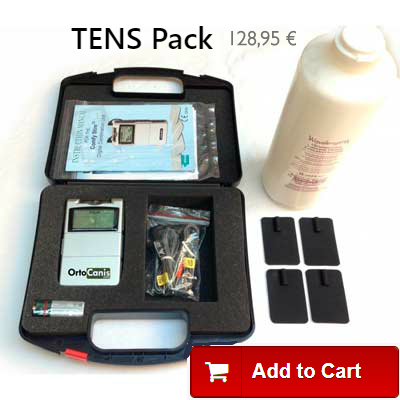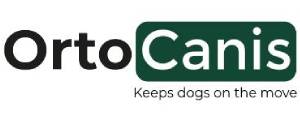Elbow dysplasia is a very common degenerative disease in young dogs. The elbow in dogs is one of the most consistent and stable joints of the body, its complexity enables two axes or degrees of supination-pronation movement of the forearm and flexion-extension. The components that make up the elbow are responsible for its complexity:
1. The humeroradial joint
2. Humeroulnar
3. Proximal radioulnar
Initially elbow dysplasia was used to describe the ununited anconeal process (UAP). Now, osteochondritis dissecans (OCD) of the medial humeral condyle, fragmented coronoid process (FCP) and elbow incongruity are also grouped within this term. When one of these ossification defects occurs in the elbow, it produces an inflammation and with time turns into an osteoarthritis in which the cartilage degenerates; for this reason, all of these conditions are frequently associated with the osteoarthritis of this joint and are a major cause of pain and lameness in the forelimbs in large-breed dogs such as the German Shepard, Labrador, St. Bernard, Rottweiler and Neapolitan Mastiff, among others.
.png) Elbow dysplasia is of multifactorial genetic origin, especially in the OCD and FCP. It affects more males than females and can take
Elbow dysplasia is of multifactorial genetic origin, especially in the OCD and FCP. It affects more males than females and can take
on a unilateral or bilateral form. The genetic component has the most influence, although the onset of this condition can also result from diet, weight, environment, ligament quality, excess of physical exercise or traumas.
The first symptoms can appear at 4-5 months when the dog shows intolerance to exercise, limping when initiating a movement or after prolonged exercise. Some dogs do not show any signs of having a disease in the elbow until reaching older age when the osteoarthritis process has already advanced. Others are able to maintain a normal level of activity throughout their entire life.
Treatment
Conducting an early radiological diagnosis makes it possible to introduce an adequate treatment and prevent the formation of osteoarthritis that would cause pain and functional limitation of the elbow throughout the animal’s lifetime. The diagnosis can be supplemented with diagnostic tests, such as a CT or MRI.
The evolution depends on the degree and type of injury, however without surgery it is generally unfavorable. Surgical treatment yields good results if degenerative changes have not already occurred in the joint. Either way, a good rehabilitation plan is needed that aims to:
- Accelerate the recovery process
- Eliminate pain and inflammation
- Decrease limping
- Maintain and / or improve range of motion
- Maintain tone, muscle mass and strength
- Minimize or slow the effects of joint degeneration - Osteoarthritis
- Avoide compensating with the neck, spine or limbs
- Give the animal maximum capabilities so that it can be functional and have a good quality of life
Physiotherapy treatment varies depending on the animal and the state of the injury. In order for treatment to be effective and avoid health consequences such as reduced mobility and/or chronic pain, it is important to start as soon as possible.
Rehabilitation
The animal will pass through different stages before fully recovering. It is imperative that the marked goals are reached gradually. The recovery process is finished when the animal is able to carry out its normal day-to-day activities.
During the first three days after the intervention, it is important to deal with the inflammation and pain as well as prevent the appearance of muscular atrophy and the reduction of the joint arch. To accomplish this, passive techniques are used to reduce inflammation, produce analgesia and help maintain the tone, mass and range of motion. Among these techniques are electrotherapy (segmental TENS and muscular electrostimulation), massages, passive movements and cryotherapy (cold).
In older dogs or dogs that have not been operated on the goals are the same as for those animals who have been. It is important to eliminate pain, as no work can be done if the animal is in pain.
It is important to massage and move the affected elbow from the start, unless contraindicated by your veterinarian, and in the case of surgical fixation it is important to respect the healing period and fusion of the fixed parts. Massaging and moving the area and affected limb helps to maintain mobility, prevent the loss of mass and tone and work the dog's proprioceptors.
Gentle mobilization combined with different massage techniques help to decrease inflammation and reduce pain.
With TENS at the segmental level we can produce analgesia and reduce the amount of drugs administered. Some animals are intolerant to certain drugs that produce analgesia and TENS can reduce their pain. TENS also can be used directly on the injured or operated region, as long as there is no osteosynthesis material beneath the area, as this could cause an internal burn.
intolerant to certain drugs that produce analgesia and TENS can reduce their pain. TENS also can be used directly on the injured or operated region, as long as there is no osteosynthesis material beneath the area, as this could cause an internal burn.
Muscular electrostimulation helps to prevent the occurrence of atrophy and maintain muscle mass and tone. With the electric stimuli we can stimulate nerve conduction.
At the beginning and end of the session, cold is used for its anti-inflammatory, edema and pain reduction properties.
From the fourth day on and during the following two weeks when the inflammation and pain have disappeared, it is the time to introduce simple active exercises like “shaking hands” or going for short walks on the leash that force the animal to support itself equally on all four limbs, thus avoiding an imbalance among the limbs stemming from not having a correct support on the ground. The duration of the walks will steadily increase until the end of recovery.
Once the stitches have been taken out the animal can be placed in water. The benefits of water are taken advantage of in order to improve recovery. Hydrotherapy (underwater treadmill) facilitates the animal’s position without losing its balance and, thanks to flotation, without having to support all of its weight. In addition, flotation makes it possible to work with animals that have bone pain and reduced muscle mass. The pressure of the water on the animal’s body increases sensitivity and reduces inflammations and swelling. The work done in water, on an underwater treadmill or swimming will increase as the animal recovers. Furthermore, in the water we can recover the motor pattern, increase muscle mass, tone and strength, respiratory capacity and work on maintaining and/or improving mobility.
Once the acute stage has passed after 48-72 hours and without risk of infection or inflammation, heat can be introduced to help elasticize the tissues, reduce pain and increase blood supply, among other things.
The use of tables, plates, balls and elastic bedsare important for working on balance, proprioception and, above all, the integration of the affected limb.
Now it is already the last stage, two weeks have gone by and the dog has integrated its gait pattern, it is time to do exercises that will improve the quality of movement. These are active, more complex exercises aimed at integrating the affected limb or limbs. Active and proprioception exercises are used to increase muscle tone, mass and strength, work on coordination and balance as well as range of motion. Tracks with different surfaces, cones, bars, circuits, climbing stairs and ramps (steps with an inclined plane) are all used.
Throughout the recovery and treatment of animals with established osteoarthritis, it is critical to decrease the amount of weight on the elbow joints. To do so, special harnesses for elbow support are used. In addition to reducing the amount of weight, they reduce pain and do not hinder movement; the animal feels more comfortable, the joint is protected at all times from scratches and bumps and they help to maintain the heat given off by the animal, which leads to additional relief of the affected area.
Special care must be taken at home for animals suffering from elbow conditions. These cares are necessary during and after treatment:
- Avoid slippery floors
- Avoid ramps and stairs at the beginning of treatment for operated-on animals and animals that are undergoing conservative treatment. Once rehabilitated you can use ramps to help them get on the couch and in the car, as it is not recommended that they do so alone, it could cause a relapse.
- It is recommended that they rest on soft, clean surfaces that are also firm enough to help the animal’s incorporation: special mattress for dogs.
- Keep the skin clean any dry
- Use specials dishes at the correct height that do not force the elbow joints
- Proper diet and weight control. Being overweight harms the joints and causes more pain for the animal
It is very important to develop an exercise routine and environment that will help keep the animal comfortable with a good quality of life.
You can also check out the following links:

